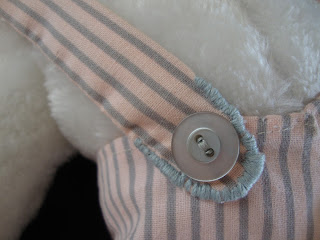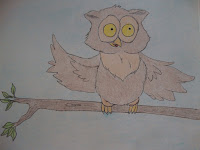“Rapunzel,
Rapunzel, letdown your hair to me!” Oh, the familiar words from the
immortal tale! We know the story well, but let us contemplate the
depth of what is really happening in this fairy tale. I have said it
before and I will say it again: Many read these stories aimlessly and
frivolously, oblivious to the deeper underlying principle, truth, and
lesson contained therein.
Let
us contemplate what is really happening in this story. A young
couple is anticipating the birth of their child. They are poor and
the wife is hungry. They see a garden with delectable vegetation of
which they greatly want to feast. The husband wants to be sure his
wife has plenty to eat, especially since she is expecting a baby
soon. He steals of the luscious food rather than asking because he
fears the owner—a witch. But this caused him more harm than if he
had simply asked. “It is easier to ask forgiveness than
permission.” Now they will lose their daughter when she is born.
Now
let us analyze the old woman. Yes, she is wicked, but she is also a
person, and people are emotional beings. Perhaps she had never
experienced love in her life. Now she covets love and does whatever
it takes to get it. But she doesn't have a loving heart. She hurts
others in order to get it. It is artificial. She wants to create
her own world with Rapunzel as she raises her in a lonely castle,
trapped and secluded from society. The old woman wants Rapunzel only
for herself. It is fear that does this: fear that she may lose her.
The witch must hold on to her tightly and let no one else in-- in to
this world she has created for the two of them. The statement “let
down your hair to me” is symbolic of “submission to me and no one
else” and rebellion against the natural order of things.
Are
we like the woman in this fairy tale? Do we have a hard time letting
go? How are our relationships? Parents can often have a hard time
letting go—letting go of sons and daughters. The child feel
trapped in a castle with no doors. They are captive. The
relationship between the child and parent is rocky as a result. The
young person feels like a canary in a cage and wants more than
anything to get out and to be free. Eventually they do get out and
never want to see the “old woman” again.
The
prince does come in time, and Rapunzel wants more than anything to
experience freedom and real love—love that is not selfish but pure
and selfless. She finds it in the prince. She does not mind that he
is blind, nor does he mind that her long locks have been taken away.
Some day the prince will come whether we like it or not. Better to
let go and live. Because Rapunzel was not the only one locked in a
castle. Yes, the witch could leave and come back, but she was still
trapped in that castle in a another sense. She could never truly
enjoy Rapunzel because she had to hide her and clench her tightly in
the grips of selfishness. How much better it is to share with others
that precious ruby. How much better it is to let go and live.
A
Word from Ollie
Whooo,
Whooo! It is I, Ollie Owl again. I just love to hear a good fairy
tale. I had never pondered that aspect of Rapunzel before.
Have you? I have , however sat here in the forest and seen a lot of
things over the years. A lot of enchanting and fantastic things have
happened in this forest. Princes and princesses seem to frequent this
setting on a regular basis it seems. Hmm? Perhaps it is the
seclusion or sequestered location. I
like the word sequestered.
It is a good word to describe a forest –or many of things for that
matter—that are secluded or far away from busy places. Why not use
the word sequestered
today. I think you will enjoy it. Well, dawn will be here soon, so
it is time for me to find a fat rat to feast upon before sunrise.
Bye for now. “Hoot”les !
The
Crafty Corner
It
is springtime. . . or soon will be. How about a creative Easter
Bunny craft? This Bunny I made from white fake fur fabric and felt.
I had an old pattern I used to do it. I think the colours are good
ones. He is just the right size to put in an Easter basket too! One
tip to keep in mind if you ever make this rabbit (or a similar one)
is to put cardboard in the ears before attaching them. They are then
more solid and will stand up better—unless of course you want a
floppy-eared rabbit. Use felt for the eyes and nose. Embroider the
face.

Notice the lap stitch to give embroidered look.
Felt was used for the eyes, nose, tooth; embroidered mouth
You can find this rabbit and other crafts I have made by going
to
https://www.etsy.com/listing/545510192/white-rabbit-plush-easter-bunny-stuffed?ref=shop_home_feat_2
Or
you may visit
https://www.pinterest.com/doyle4education/crafts-i-make-to-sell/
HAPPY
ST. PATRICK'S DAY!
Here
are some St. Patrick's Day crafts that are fun to do. For details
about these and other crafts go to
https://happyhomefairy.com/st-patricks-day-crafts/
So get those creative juicy
flowing and create, create, create!
Book
of the Month
I
really enjoy the stories of Bill Pete. He is one of those classic
storybook writers and illustrators. He is a rare breed. He wrote
and
illustrated his books. He worked for Disney for many years doing the
storyboards used by animators. The
Ant and the Elephant
is one of his original stories. It is a story about helpfulness and
kindness, good deeds that are often done but go unnoticed. It also
contrasts the disparity of a small creature, such as an ant, to that
of a big one like the elephant. We all are important in this world
and have a part to sing in the chorus of life.






















































